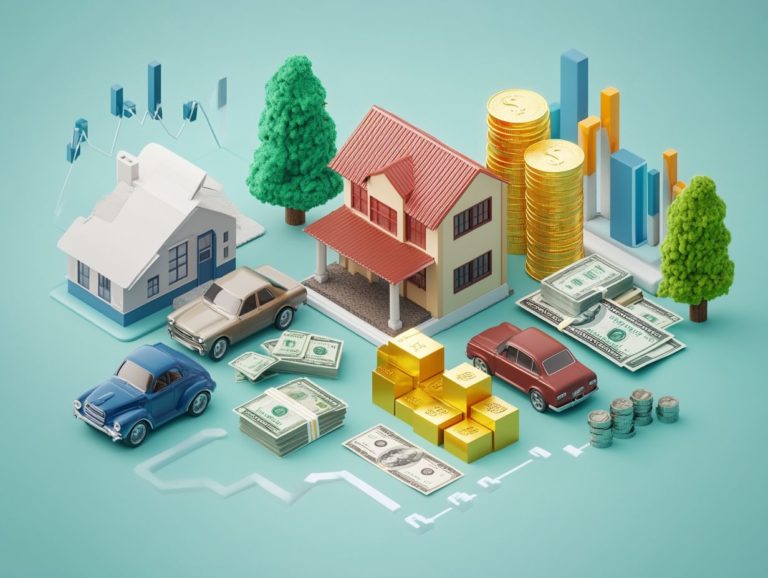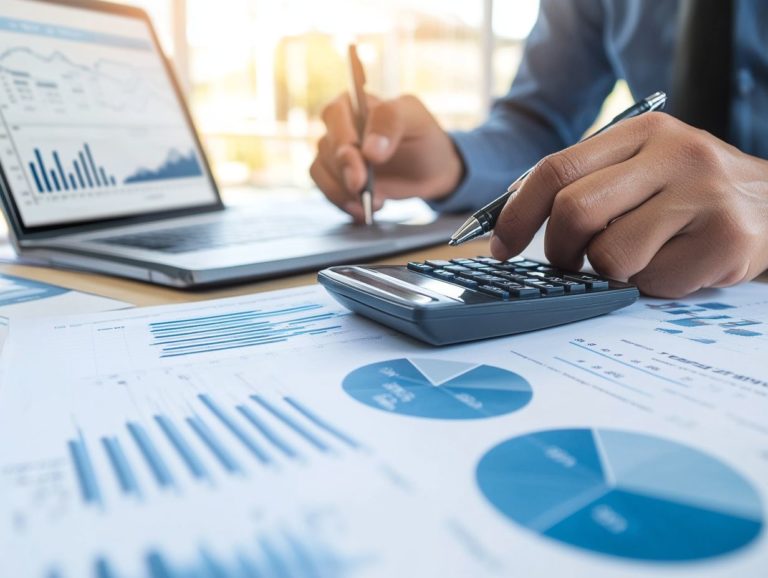Understanding Physical vs. Paper Assets in Investing
Investing can indeed feel overwhelming, especially when you’re trying to navigate the intricate world of assets. Discover how to diversify your portfolio effectively!
This article breaks down the two primary categories for you: physical assets, such as real estate and commodities, and paper assets, which include stocks and bonds.
By delving into their unique characteristics, associated risks, and investment strategies, you’ll gain a clearer understanding of how to effectively diversify your portfolio.
Whether you’re a seasoned investor or just beginning your journey, this guide is designed to help you make informed decisions that will secure your financial future.
Contents
- Key Takeaways:
- Types of Assets
- Differences Between Physical and Paper Assets
- Investing in Physical Assets
- Investing in Paper Assets
- Combining Physical and Paper Assets in Your Portfolio
- Benefits and Diversification Strategies
- Frequently Asked Questions
- What are physical assets in investing?
- What are paper assets in investing?
- What is the difference between physical and paper assets in investing?
- What are the advantages of investing in physical assets?
- What are the advantages of investing in paper assets?
- Which type of asset is better for me to invest in?
Key Takeaways:

- Physical assets are tangible items such as real estate and precious metals, while paper assets are intangible items like stocks and bonds.
- Physical assets also provide stability and diversification, but require management and maintenance. Paper assets offer liquidity and flexibility, but carry market risks.
- To create a well-rounded portfolio, consider a mix of physical and paper assets, aligning with your risk tolerance and investment goals.
Defining Assets and Their Importance in Investing
Assets are the bedrock of investing, embodying value in various forms that you can leverage for both financial growth and security. As you strive to build a robust investment portfolio, grasping the nuances of different asset classes particularly physical versus paper assets is essential.
This distinction shapes your investment strategies and influences your risk management, ultimately determining your financial outcomes. Be mindful that external factors such as market volatility, price fluctuations, and geopolitical events can significantly sway asset value, underscoring the importance of staying informed and adaptable.
Your investment goals not only chart the course for asset allocation but also clarify the risk tolerance linked to each decision. A well-structured investment strategy considers market dynamics, including the behavior of financial institutions that influence liquidity and the availability of certain assets.
Understanding physical commodity trading enables you to make informed choices that impact not just immediate transactions but also long-term wealth accumulation. By honing your ability to analyze these elements, you can deftly navigate the complexities of the financial landscape, paving the way for a more resilient and diversified portfolio.
Types of Assets
In finance, assets are primarily divided into two distinct categories: physical assets and paper assets, each with unique characteristics and investment potential.
Physical assets think precious metals like gold or commodities such as oil offer tangible value and serve as reliable stores of value. Paper assets, including stocks and Exchange-Traded Funds (ETFs), symbolize ownership or claims on underlying assets.
By grasping the nuances between these asset types, you empower yourself to make informed investment decisions, even amidst the unpredictable currents of market volatility.
Physical Assets
Physical assets are tangible items that possess intrinsic value, often sought after for their ability to withstand market volatility and serve as a hedge against inflation. This makes them essential for investors looking to diversify their portfolios. Examples include precious metals like gold and silver, commodities such as oil and wheat, and other capital-intensive investments.
Incorporating such assets can enhance the stability of your investment portfolio while offering potential for strong returns over time. However, they come with risks; fluctuations in market demand, changes in transportation costs, and unexpected regulatory shifts can substantially impact their value.
Pay close attention to factors like quality control and the efficiency of storage facilities, as these can influence both operational costs and the potential appreciation of your physical assets. Furthermore, global market dynamics and geopolitical events can sway how these assets are valued and utilized, highlighting the importance of strategic management.
Paper Assets
Paper assets include various financial instruments like stocks, bonds, and ETFs. They represent ownership or claims on other assets and are popular for their quick buying and selling options.
These assets can yield high returns but also come with risks. Market volatility and transaction costs make risk management essential.
Paper assets often reflect the wider economy, so it’s important to note how factors like economic indicators and global events affect their value.
Some paper assets, like cryptocurrencies, can fluctuate dramatically. This highlights the importance of maintaining a diverse investment portfolio.
Understanding the regulations around these assets is crucial because they can impact your investment strategies and overall market confidence.
Differences Between Physical and Paper Assets
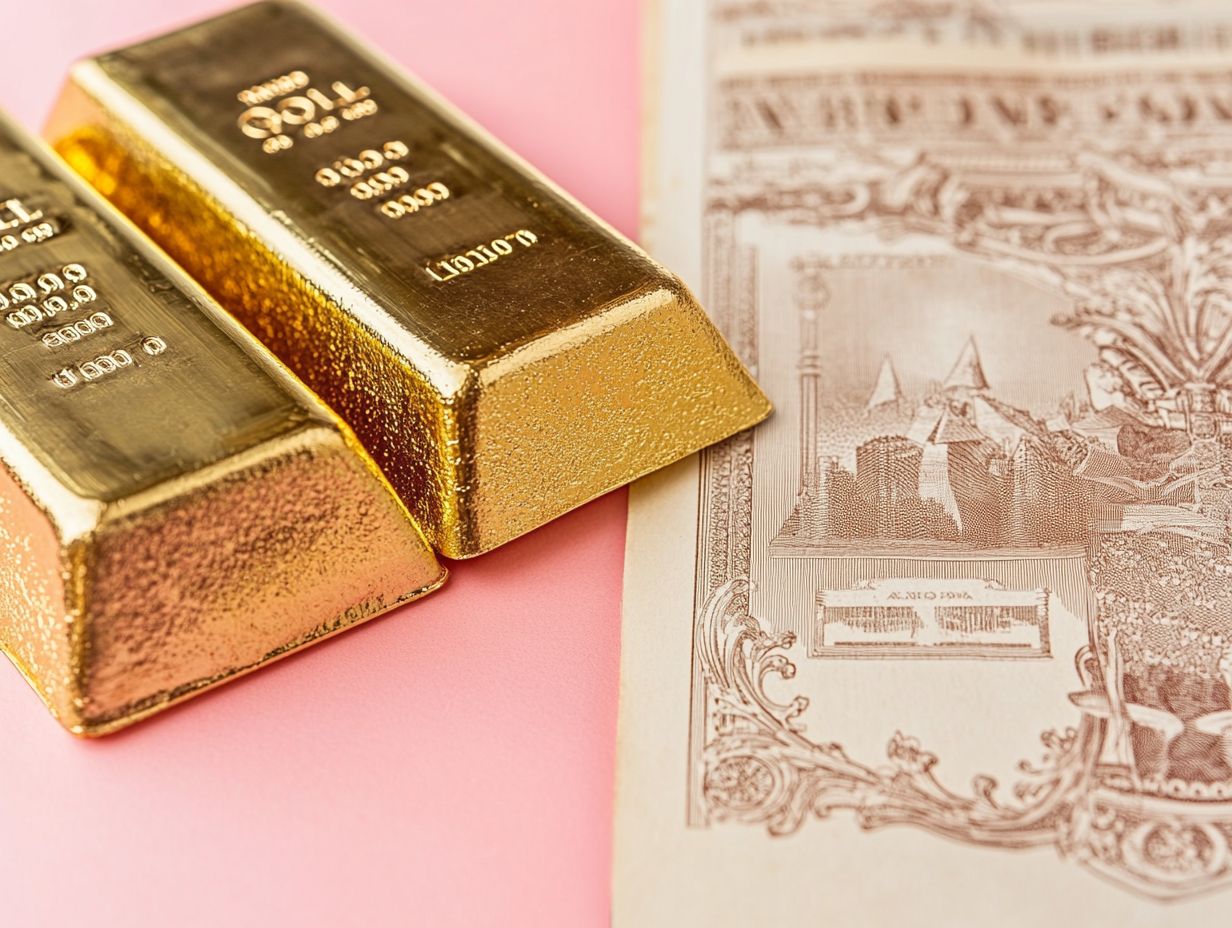
The distinctions between physical and paper assets are substantial and can profoundly influence your strategy for constructing an investment portfolio. Each asset class possesses unique characteristics, risks, and market dynamics that warrant your attention.
Physical assets provide a sense of tangible security and can even serve as valuable bartering tools. On the other hand, paper assets deliver enhanced liquidity and accessibility, which can be particularly beneficial in fast-paced markets.
By grasping these differences, you enable yourself to make informed investment decisions that align with your personal goals and maintain emotional equilibrium.
Characteristics and Risks
Understanding the characteristics and risks associated with physical and paper assets is essential for you as an investor to navigate the intricate landscape of financial markets effectively. Each asset type presents its own unique challenges and opportunities.
These distinct features shape the intrinsic value of your investments and impact their liquidity and accessibility. For instance, while physical assets like real estate or precious metals serve as protection against rising prices due to their tangible nature, they often come with high transaction costs and illiquidity factors that can complicate swift decision-making in volatile markets. Understanding the differences can help you navigate the landscape of investments, including 5 popular paper asset types.
Conversely, paper assets, such as stocks and bonds, offer the advantage of rapid buying and selling, but their value can swing dramatically based on market sentiment and economic indicators. Understanding the risks of investing in paper assets is crucial for you to tailor investment strategies that align with your individual risk tolerance and financial goals, making informed decisions more important than ever.
Investing in Physical Assets
Investing in physical assets can be one of the most exciting ways to grow your wealth! Consider options like precious metals gold and silver, for instance alongside oil and agricultural commodities such as wheat.
When approaching physical asset investments, it s essential to carefully consider various strategies. This includes grasping market dynamics, ensuring quality control, and managing the logistics of storage facilities. By doing so, you can maximize your returns while minimizing the risks linked to price fluctuations.
Popular Options and Strategies
When you consider investing in physical assets, popular options like precious metals, agricultural products, and energy resources offer a range of strategies and benefits for you to explore.
Each investment type has unique attributes and risks. Conduct thorough research to understand these differences.
For instance, if you’re interested in precious metals, you’ll want to delve into how the market changes and political events around the world that sway gold prices. Agricultural investors should keep an eye on seasonal weather patterns and potential supply chain disruptions.
Regarding energy resources, be aware that fluctuations can occur based on global demand and technological advancements in alternative energy. By focusing on quality, you’ll make better investment decisions that can lead to favorable returns while effectively managing potential drawbacks.
Investing in Paper Assets
Investing in paper assets opens the door to a diverse array of financial securities, from stocks and bonds to ETFs. Each presents unique opportunities and risks for you to weigh as you construct your portfolio.
While these assets offer high liquidity and easy access, it’s important to recognize that market volatility and transaction costs can greatly affect their performance.
Understanding these common asset types is crucial for making informed investment decisions, especially as you engage with financial institutions and navigate the complexities of regulatory frameworks. It’s also important to weigh the risks of each investment type.
Common Types and Considerations
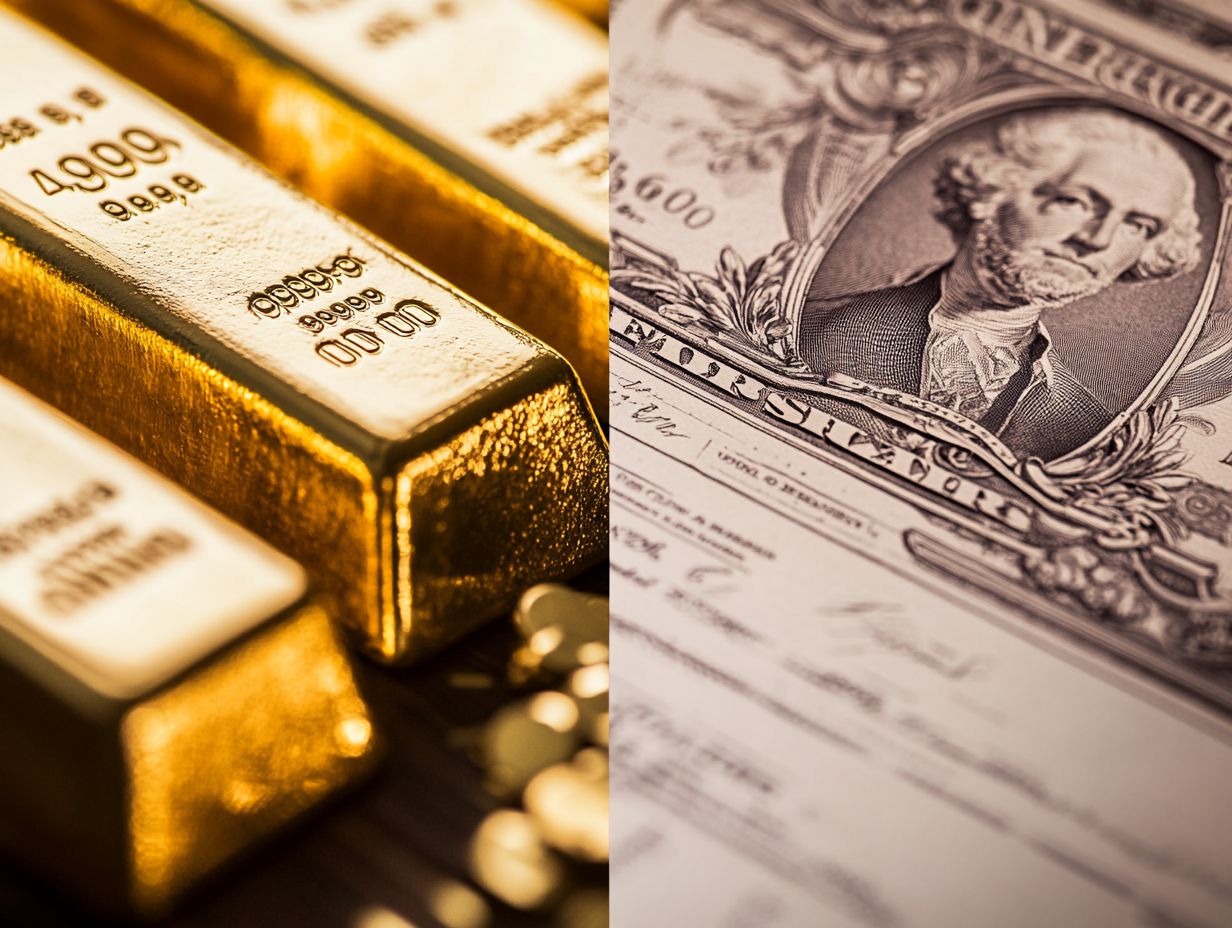
Common types of paper assets like stocks, bonds, and exchange-traded funds (ETFs) each come with their own unique characteristics that can either propel or hinder your investment journey, depending on the prevailing market conditions.
Understanding these distinctions is essential for crafting a well-rounded investment strategy. For instance, when you evaluate stocks, it’s important to weigh their volatility and potential for high returns against broader economic trends that can significantly sway market sentiment.
Bonds can act as a stabilizing force in your portfolio, especially during times of economic uncertainty, offering a more predictable income stream.
ETFs often appeal to those seeking immediate diversification and lower fees. However, it’s crucial for you to remain mindful of their exposure to rapid market fluctuations and the associated risks.
By thoughtfully integrating these paper assets into your strategy, you can effectively manage risk and align your portfolio with your financial aspirations.
Combining Physical and Paper Assets in Your Portfolio
Combining physical and paper assets in your investment portfolio can significantly enhance diversification, offering you a balanced approach to capital investment.
This strategy helps you tackle risks head-on! By strategically allocating your resources between tangible assets like precious metals and more liquid options such as stocks and ETFs, you can align your portfolio with your long-term investment goals while adeptly navigating varying market conditions.
Benefits and Diversification Strategies
Integrating both physical and paper assets into your investment strategy offers numerous benefits, including improved risk management, enhanced returns, and exceptional adaptability to ever-changing market dynamics.
Your diversification strategies could involve allocating a portion of your portfolio to precious metals as a hedge against inflation. At the same time, you can leverage paper assets for liquidity and growth potential. This balanced approach mitigates the risk of financial losses and accommodates varying capital requirements over time.
Combining assets like real estate with stocks or bonds provides a strong defense against volatility. Each asset class typically responds differently to economic fluctuations. For instance, a downturn in the stock market might coincide with rising property values, allowing you to protect your portfolio from adverse impacts.
Incorporating commodities like oil or agricultural products further enriches your diversification strategy, providing added protection during inflationary periods.
By adopting a flexible investment plan that regularly adjusts to current market conditions, you can ensure you are well-positioned to maximize returns while effectively managing inherent risks.
Frequently Asked Questions
What are physical assets in investing?
Physical assets in investing refer to tangible items that have inherent value, such as real estate, precious metals, and commodities. These assets can be touched, seen, and physically owned.
What are paper assets in investing?
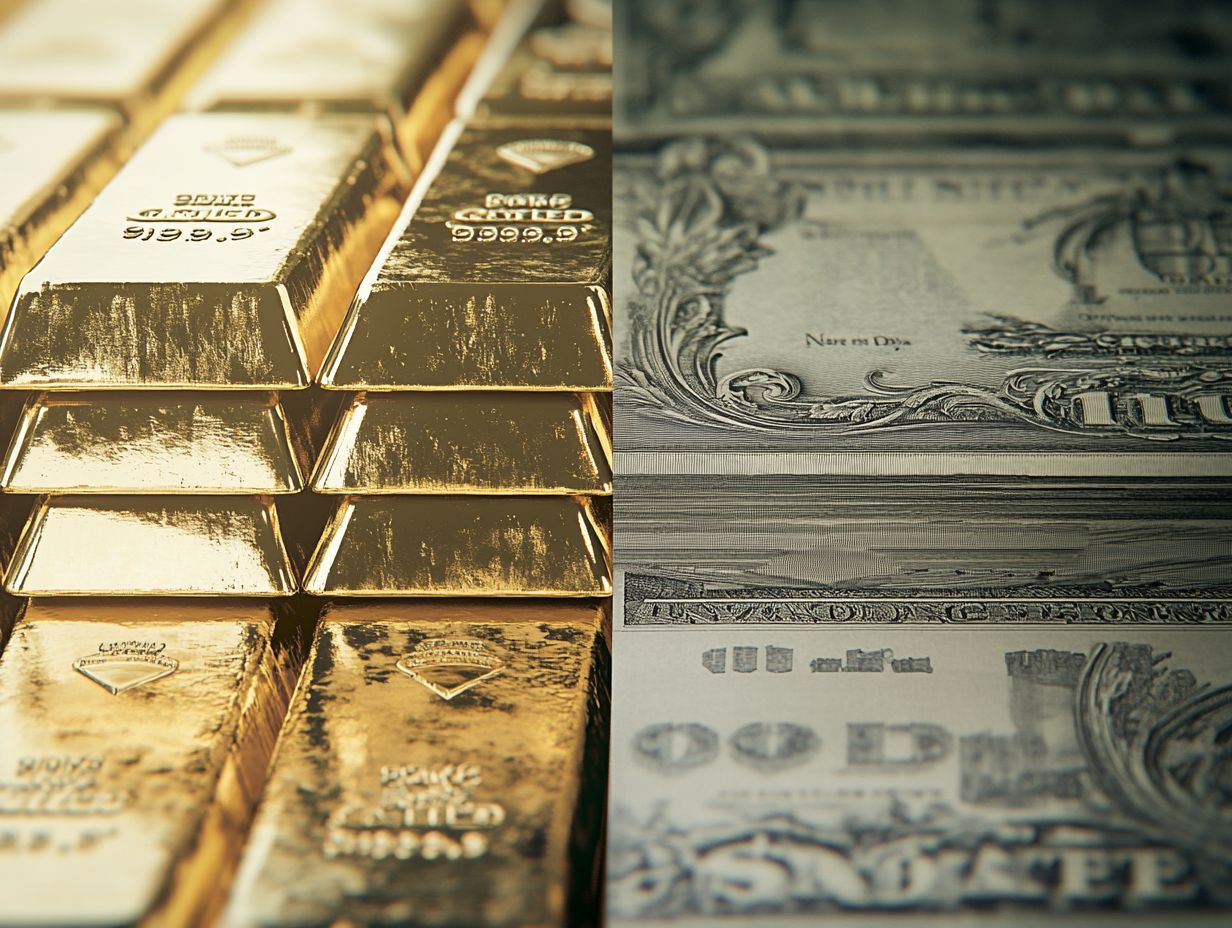
Paper assets in investing are represented by legal documents, such as stocks, bonds, and mutual funds. While they do not have inherent value, their worth is based on the performance of the underlying asset.
What is the difference between physical and paper assets in investing?
The main difference is that physical assets have tangible value and provide a sense of security. In contrast, paper assets rely on market fluctuations and may not have tangible value.
What are the advantages of investing in physical assets?
Investing in physical assets helps protect against inflation and market volatility. These assets also have the potential for long-term growth and serve as a diversification tool in your portfolio.
What are the advantages of investing in paper assets?
Investing in paper assets allows for easier liquidity and accessibility, as they can be bought and sold quickly. They also offer the potential for higher returns and are less subject to physical risks and maintenance costs.
Which type of asset is better for me to invest in?
The best type of asset for you depends on your individual goals, risk tolerance, and investment strategy. It’s important to carefully consider your options and consult with a financial advisor before making any investment decisions.
Start exploring your investment options today!










